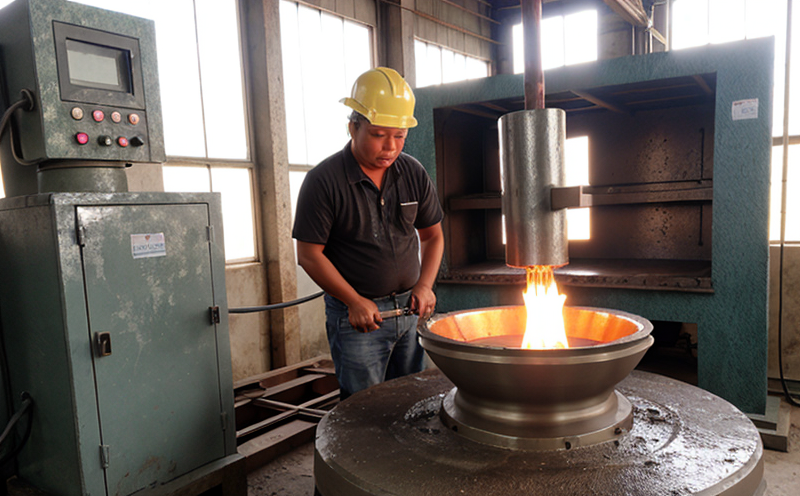ISO 8080 Hot Tearing Testing of Cast Metals
The ISO 8080 standard specifies methods for determining the resistance to hot tearing in cast metals. This test is critical for quality assurance and process optimization, ensuring that castings meet the required mechanical properties without defects such as hot tears which can compromise structural integrity.
Hot tearing occurs during solidification of a casting when the metal cools through its temperature range where both liquid and solid phases are present. This phenomenon is especially problematic in cast iron and aluminum alloys due to their wide solidification ranges and low melting points, respectively. The test aims to identify this susceptibility by subjecting a sample casting to controlled cooling conditions that mimic real-world production environments.
The testing process involves preparing the specimen according to ISO 8080 guidelines which dictate specific dimensions and shapes depending on the alloy type being tested. Specimens are then subjected to gradual cooling in a furnace or hot box at specified rates, typically from 150°C/min down to room temperature over several hours. During this period, the sample is inspected for cracking along the grain boundaries where hot tearing is most likely to occur.
The results of the test are interpreted based on the location and severity of any cracks observed. Acceptance criteria vary by alloy but generally specify maximum allowable crack lengths or depths before a casting fails the test. Compliance with these standards ensures that manufacturers can produce defect-free castings, thereby enhancing product reliability and reducing costly rework.
Understanding the underlying principles of hot tearing helps R&D engineers optimize processes to minimize defects while maintaining material integrity. For instance, they might adjust alloy compositions or cooling rates based on ISO 8080 insights. Quality managers also benefit from this testing as it provides objective data for setting quality control thresholds and tracking process improvements over time.
Incorporating ISO 8080 hot tearing tests into production protocols not only enhances product performance but also supports broader industry standards like those outlined in ASTM A479 or EN 1652, which further emphasize the importance of defect-free castings across various sectors including automotive and aerospace.
- Identifies susceptibility to hot tearing during casting processes
- Ensures compliance with international standards like ISO 8080
- Aids in optimizing casting procedures for better quality outcomes
- Supports long-term reliability and safety of cast products
Applied Standards
The ISO 8080 standard is widely recognized in the industrial manufacturing sector for its comprehensive approach to evaluating hot tearing susceptibility. This standard serves as a benchmark against which manufacturers can assess their casting processes and materials.
In addition to ISO 8080, other relevant standards include ASTM A479 and EN 1652, each providing additional perspectives on mechanical testing of cast metals. By adhering to these international norms, laboratories ensure that they offer services aligned with global best practices, enhancing trust and credibility among clients.
Adherence to such standards also facilitates smoother interactions within the supply chain by ensuring consistency in quality metrics across different manufacturers and suppliers. This interoperability is crucial for industries reliant on high-quality castings, such as automotive manufacturing where component reliability directly impacts vehicle safety.
Competitive Advantage and Market Impact
- Maintains product integrity by eliminating hot tearing defects
- Promotes adherence to international quality standards, boosting brand reputation
- Facilitates smoother supply chain operations through consistent testing protocols
- Enhances customer satisfaction and loyalty with reliable products
Use Cases and Application Examples
The ISO 8080 hot tearing test finds extensive application in various sectors including automotive, aerospace, and construction. In the automotive industry, ensuring defect-free castings is essential for maintaining vehicle safety standards. Aerospace applications similarly demand high precision to prevent catastrophic failures.
For instance, a manufacturer of brake components would use this testing method to verify that their cast iron brakes do not exhibit hot tearing cracks under typical operating conditions. In the construction sector, quality assurance through ISO 8080 tests ensures that structural elements like steel beams and rods are free from defects that could compromise building stability.
Engineers often use these test results to refine casting techniques or modify alloy compositions based on identified weaknesses. By integrating this information into their R&D efforts, companies can continually improve product quality and meet increasingly stringent market demands.





